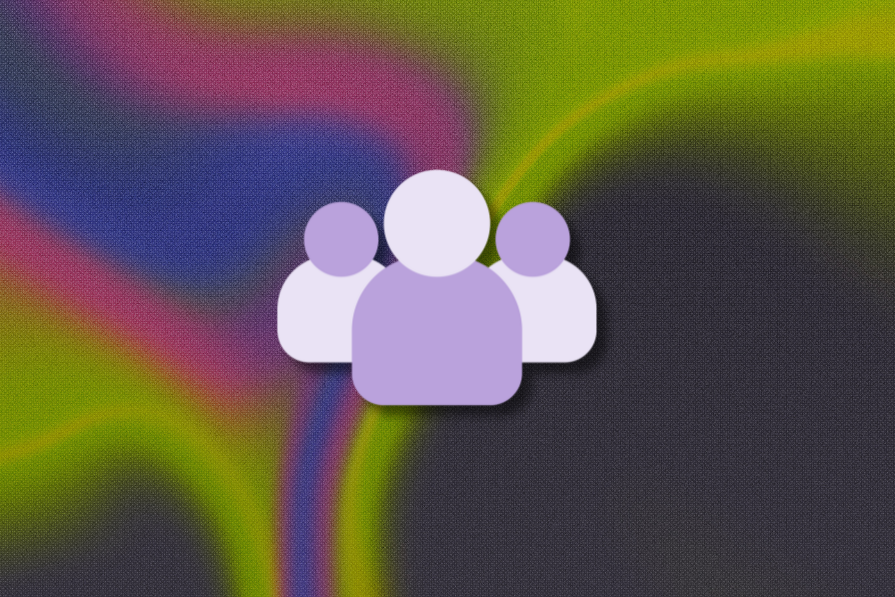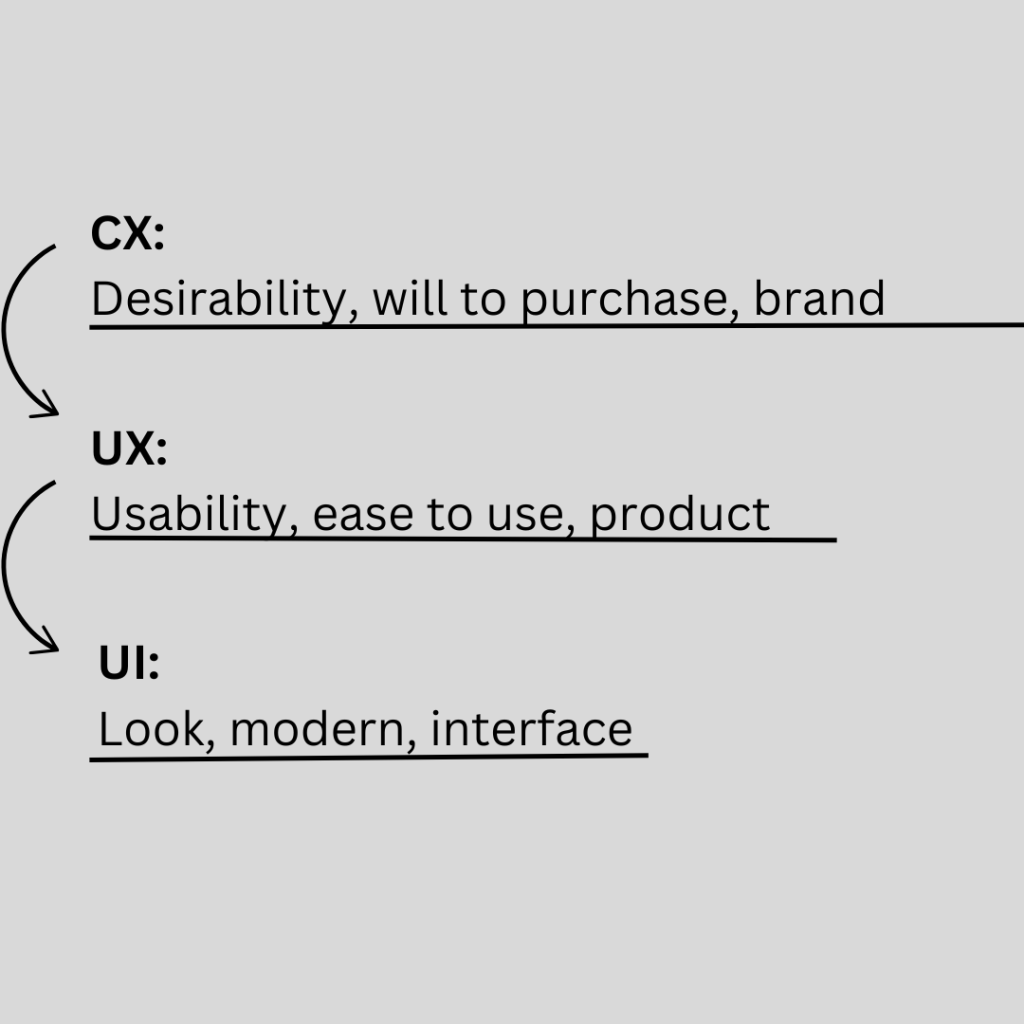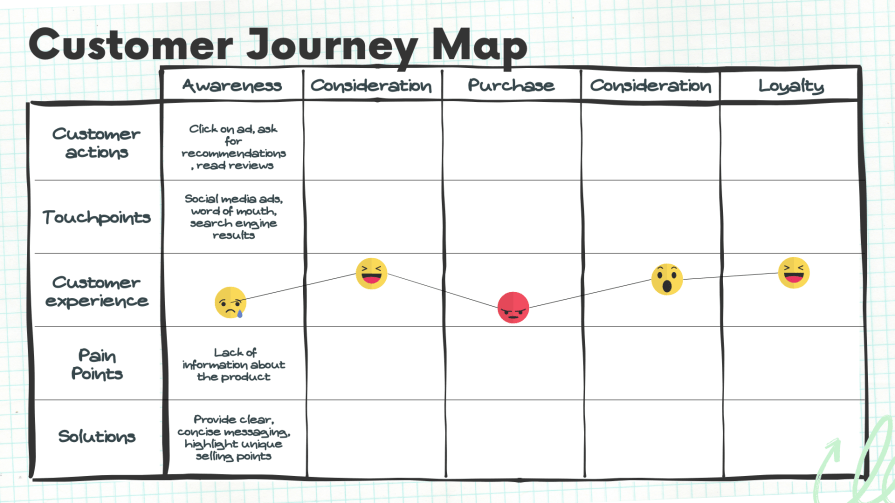The design world is constantly evolving — there are overlapping and expanding disciplines, and we end up mixing names and roles with one another. UX design is like the foundation for many specialized roles, all of which work towards one common goal — creating valuable experiences possible for users.

Think of UX writers — they specialize in crafting the copy that guides and informs users. UX researchers dive deep into understanding user behaviors and needs. UI designers? They’re the masters of graphical elements. But CX designers?
Customer Experience (CX) design is best described as UX design applied to branding — a bridge between user experience and marketing. It focuses on creating meaningful, seamless, and satisfying interactions with a brand across every touchpoint, whether physical, digital, or interpersonal.
In this blog, I’ll dive into the differences between UX and CX design, how they align, and strategies to enhance customer journeys for lasting loyalty.
A formal definition of CX design might look like this:
CX design is the strategic process of shaping every interaction a customer has with a brand to create meaningful, seamless, and satisfying experiences. It encompasses all touchpoints, whether physical, digital, or interpersonal, aiming to foster positive emotions and build lasting relationships.
CX design goes beyond product usability or service efficiency. Its focus is more holistically on the customer journey and their emotions when interacting with a brand.
I would say that CX is almost more important than UX in the modern digital landscape, and that’s a stand I didn’t have when I started my career. I learned in school that the most important part of any product or service is to ensure a great user experience. Everything must go smoothly, and the design must match the mental representation the user makes of an app, and I stand by that.
All of that’s true, but CX expands those principles further to match the reality of a competitive market.
People are not just users. They’re also customers. And customers have choices about what they want to invest their money in.
I like to phrase it like this — What’s the point of making a perfect product if no one buys it?
UX designers have good intentions; they want to impact the world, but there are other factors to take into account. There’s marketing, stakeholders will, niche saturation, etc.
CX design extends UX design over the product and thinks of every way the brand interacts with customers because buying the product is already part of a global experience.
There is too much going on the internet, too many choices, too many great and bad products. When too many products have good UX, CX becomes a differentiating point. It’s a way for brands to reach consumers in a way that pleases prospects, and it helps brands gain momentum, get new clients, and retain the old ones.
In this unstable environment full of competition and new tech trends to follow, CX design is no longer just an advantage but a necessity for long-term success.
While CX design is often seen as an evolution of UX, they overlap in their shared goal — improving interactions to meet user or customer needs.
For example, a well-designed app (UX) enhances a seamless customer journey (CX). Similarly, a positive brand interaction at a support center (CX) can reinforce the usability of a product (UX).
Both rely on user research and data to inform decisions. However, while UX often builds individual elements like interfaces, CX connects those elements into a cohesive brand experience.

CX design enlarges the understanding of users and helps to identify gripping points of an interface that is objectively well crafted.
A designer focusing only on their product might make something great, but they might still observe that people abandon their tasks or don’t understand how to do something. By enlarging their scope to CX, designers might understand that the problems lie in external factors.
Let’s take an example.
A hiring company creates a flawless form for job applicants to fill out their CVs. From a UX perspective, the form is perfect — clean design, logical flow, and easy navigation. Yet, analytics reveal high abandonment rates. Why?
The problem lies outside the interface. People applying are actively looking for a job and have already filled their CVs on ten other company websites today. They are fed up and prefer to pass on this opportunity rather than do the same thing one more time.
CX will get data on what the user does during the day before and after interacting with a product, their* *emotional state, and the cross-device experience, as some users might go from phone to laptop to TV and expect different behavior from each.
One of the primary ways CX influences UX is, thus, through customer journey mapping. By understanding the customer’s path across multiple touchpoints, CX design highlights critical moments that require optimized user experiences.
Most templates for customer journey maps include the moments of awareness, consideration, decision, purchase, and post-purchase, which are related to emotions, activity at this time, pain points, and solutions.
The customer journey map should not be misunderstood as a user journey map, though.
A user journey map will focus on a typical day of a user and at which moment they will get in touch with our product. As a customer, the different stages can be spread over a longer period of time, from initial awareness to purchasing the item. It’s a much more macro view. Obviously, each map can be refined to accommodate the company’s needs and focus more precisely on a specific stage.
Here is one free template I found on Canva:

At the heart of CX design is the principle of customer-centricity — placing the customer’s needs and expectations at the core of every decision. But here’s the hard part. Customers often don’t know what they want.
To anticipate their needs, CX designers rely on a mix of quantitative and qualitative data. Identifying different personas allows brands to tailor experiences — like suggesting batteries with a toy purchase.
Being customer-centric means understanding what customers truly value and delivering that consistently across various touchpoints.
Consistency builds trust. Every interaction — be it on a website, app, or physical store — should reflect the brand’s identity.
Imagine a brand with a luxurious online presence but cheap-feeling physical stores. The disconnect would confuse customers and erode trust. Brands like Apple excel here — their minimalist, high-quality vibe is consistent across products, packaging, stores, and even advertising.
Customer decisions are often influenced as much by emotions as by logic. Beyond meeting functional needs, CX design seeks to evoke positive feelings such as joy, trust, or reassurance.
Take Disney as an example. Its products evoke nostalgia and joy tied to childhood memories. That’s why merchandise from movies made decades ago continues to sell.
For brands less magical than Disney, storytelling is a powerful tool. Ads that depict aspirational lifestyles can create emotional connections, making customers feel joy when they buy a product.
But the challenge doesn’t end there. Post-purchase touchpoints must maintain that positive emotional engagement, requiring personalization and timing to align with the customer’s emotional state.
Personalization is a vital principle in CX design that focuses on tailoring interactions to meet individual needs, preferences, and behaviors.
Consider YouTube. It curates homepages based on user history, maximizing engagement. Imagine if everyone saw the same videos. It just wouldn’t work.
Personalization in CX also extends to communication. Emails addressing customers by name or sending birthday greetings go a long way in fostering trust and loyalty.
A customer journey map answers critical questions. What does a person do from waking up to bedtime, and when and why do they interact with the app? This map visually represents the stages a customer navigates — from initial awareness to post-purchase follow-up — offering insights into their broader behaviors.
By understanding this context, UX designers can craft solutions that seamlessly integrate into the customer’s day-to-day life.
Customer journey maps also highlight customers’ emotional states, a crucial factor influencing their decisions. A practical map includes key elements:
Based on this research, UX designers can then imagine new functionalities matching the mindset of the user.
An often-overlooked reality is that customers aren’t always the end-users of a product. CX needs to account for both the purchaser’s desires and the user’s needs. For example, in the case of a gift, the buyer evaluates:
Meanwhile, the recipient (end-user) considers:
Misalignment often occurs when buyers have inaccurate assumptions about end-users. For example, in the “silver economy,” people in their 50s purchase products for their parents, assuming health-focused priorities. However, older adults may value communication features more than health tracking.
Even self-purchases can exhibit dual personas. The motivated buyer and the less enthusiastic user. Effective UX aligns these by leveraging strategies like gamification to maintain engagement post-purchase.
Modern customers interact with brands through various channels—websites, apps, social media, and physical stores. Ensuring a unified experience across these touchpoints builds trust and fosters engagement.
For example:
Mapping customer journeys enables designers to identify gaps in the multi-channel experience and craft smoother interactions that enhance user convenience.
Top brands like Netflix, Apple, and Spotify have built strong CX and UX integration by resonating with users across devices and creating emotional connections:
To create a CX strategy that really resonates with your audience, start by defining a distinct vibe that aligns with your brand. Whether it’s calm, excited, joy, or something else, make sure it shines through in every touchpoint. This helps create an atmosphere that feels real and consistent across the board.
But don’t stop at just emotions.
Building a community around your brand can make a huge difference, too. Encourage your customers to share their experiences, whether it’s on social media, in a loyalty program, or even in a review. When people can connect with others who share their interests, your brand becomes a space where they belong.
And when they engage, reward them!
Exclusive content, early access to new products, or special events are all great ways to show appreciation. It’s not just about making customers happy at the moment; it’s about turning them into fans who feel connected to your brand and want to spread the word. When people feel like they’re part of something bigger, they stick around longer, share their thoughts, and help spread the love. This community-first approach can really boost loyalty and even help you grow.
| Challenge | Description | Example/Strategy |
|---|---|---|
| Balancing business goals with customer needs | Striking the right balance between profit and customer satisfaction. Creating a positive experience without straining finances. | Tedybear, a French mattress brand, includes cozy socks with every order to surprise and delight customers without significant cost. |
| Managing complex customer journeys | Customer journeys are unpredictable and influenced by external factors like mood and circumstances, which can impact how they feel about your brand. | Invest in user research and maintain consistent branding to build trust, even when external factors affect the customer experience. |
| Measuring CX effectiveness | Tracking actions that reflect customer behavior and business outcomes to measure CX success. | Use A/B testing, monitor site engagement, and gather feedback with surveys like NPS and CSAT to gain insights into CX performance. |
CX is crucial for creating successful digital products. It’s not just about individual touchpoints but the entire journey, from first impressions to long-term relationships. By aligning CX with UX and focusing on personalization and emotional connection, businesses can build stronger, more meaningful interactions.
Tools like journey mapping, user feedback, and collaboration are key to integrating CX into UX. While challenges like balancing business goals, managing complex journeys, and measuring effectiveness exist, the rewards — customer loyalty, satisfaction, and brand performance — are worth the effort.
CX is an ongoing process, not a one-off.
By embedding it into every part of your design and operations, you’ll build lasting customer relationships and gain a competitive edge.
LogRocket's Galileo AI watches sessions and understands user feedback for you, automating the most time-intensive parts of your job and giving you more time to focus on great design.
See how design choices, interactions, and issues affect your users — get a demo of LogRocket today.

Small actions can have large consequences in complex systems. Here’s how UX designers can manage dependencies so users feel informed and in control rather than blocked or blindsided.

This article examines when hero sections are necessary in digital products, when they create friction, and how to evaluate them using UX goals, primary actions, user flow impact, and real-world alternatives.

AI speeds up tasks like research synthesis, ideation, and first-draft wireframes, but it can’t replace clarity, taste, or decision-making. Here’s a grounded look at what AI actually does well in UX right now.

Discover how to craft UX-friendly hero sections with examples, design tips, and strategies that drive engagement and conversion.